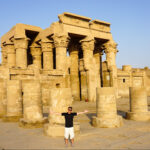Cairo, the sprawling capital of Egypt, holds within its heart a magnificent gem – the Mosque of Muhammad Ali. This historic and iconic mosque is a testament to the grandeur of Islamic architecture and the enduring legacy of Egypt’s Ottoman era. Also known as the Alabaster Mosque, this awe-inspiring structure offers visitors an unparalleled experience of cultural richness, spirituality, and architectural marvels. This comprehensive guide will delve into the captivating history, intricate design, and spiritual significance of the Mosque of Muhammad Ali, inviting you to join us on a journey through time and faith.
Mosque of Muhammad Ali: A Historical Marvel
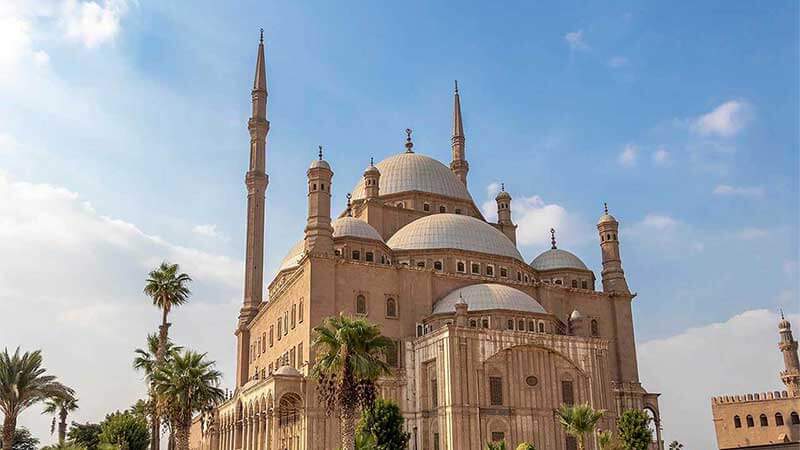
The Mosque of Muhammad Ali is an architectural masterpiece in the Citadel of Cairo, perched high on the Muqattam Hills, offering breathtaking panoramic views of the city below. This mosque holds immense historical significance, as it was built in the early 19th century by the Ottoman ruler Muhammad Ali Pasha, considered one of the most prominent figures in Egypt’s modern history. The mosque’s construction began in 1830 and was completed in 1857, a testament to its builders’ meticulous craftsmanship and unwavering dedication.
The Luminous Beauty of Alabaster
The Mosque of Muhammad Ali stands out for its extensive use of alabaster in its design, a fine-grained, translucent, and luminous mineral that exudes a sense of ethereal beauty. The walls, minarets, and, most notably, the grand dome of the mosque are clad with this remarkable stone, casting an enchanting glow when illuminated by the sun’s golden rays.
A Harmonious Blend of Architectural Styles
The Mosque of Muhammad Ali represents a harmonious blend of architectural styles, combining the luxury of Ottoman architecture with subtle elements of classic Islamic design. The mosque’s interior is adorned with intricate arabesques, geometric patterns, and calligraphy, showcasing the artistic prowess of skilled artisans of that era.
The Grand Dome: A Symbol of Unity
The mosque’s grand central dome is an awe-inspiring feature that dominates the skyline of Cairo. Rising majestically, the dome symbolizes the unity of the Muslim community, emphasizing the essence of togetherness and spiritual oneness. The inside of the dome is adorned with mesmerizing geometric designs that draw the eyes toward the heavens in contemplation and prayer.
The Magnificent Minarets
The Mosque of Muhammad Ali boasts two elegant minarets that soar toward the sky, each standing at approximately 82 meters (269 feet). These minarets serve as architectural marvels and traditional call-to-prayer towers, adding to the mosque’s spiritual significance.
The Enchanting Courtyard
As you enter the mosque, you are greeted by a vast, enchanting courtyard embellished with marble and adorned with beautiful fountains. The yard offers visitors a moment of serenity and reflection, a tranquil space to escape the bustling city and find solace in embracing spirituality.
Exploring the Interior Splendor
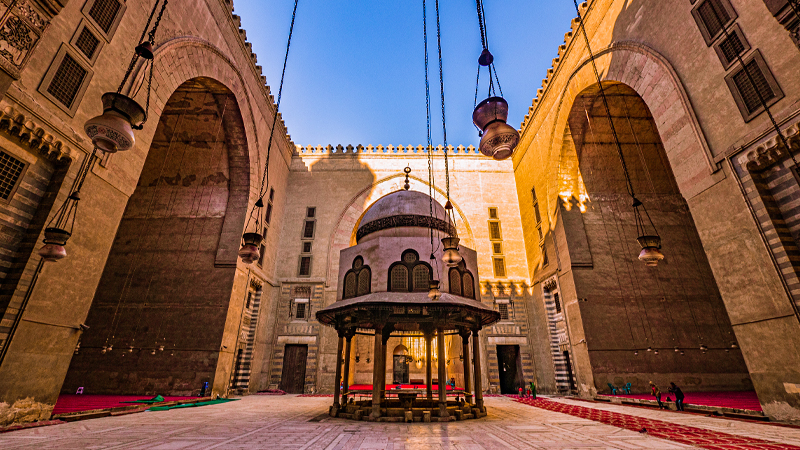
Stepping inside the mosque, visitors are met with divine grandeur. The walls are lined with intricately designed prayer niches, and the spacious hall accommodates thousands of worshipers during religious gatherings. The breathtaking central prayer hall is supported by majestic columns, emphasizing the mosque’s vastness and architectural prowess.
Muhammad Ali’s Tomb: A Place of Reverence
The Mosque of Muhammad Ali holds religious significance and serves as the final resting place of the visionary leader himself, Muhammad Ali Pasha. His tomb lies within the mosque, and visitors can pay their respects to this iconic historical figure who played a crucial role in shaping Egypt’s modern identity.
The Calligraphic Masterpiece
One of the most impressive aspects of the Mosque of Muhammad Ali is the stunning calligraphy adorning its walls. The intricate Arabic calligraphy features verses from the Quran and evokes a sense of divine beauty and spiritual enlightenment.
The Mihrab: An Architectural Masterwork
The mihrab is a semicircular niche in the mosque’s wall, indicating the direction of Mecca, towards which Muslims face during their prayers. The mihrab in the Mosque of Muhammad Ali is a true architectural masterpiece adorned with intricate mosaic work and calligraphy, signifying its sacred importance in the Islamic faith.
Captivating Light and Shadows
The play of light and shadows within the Mosque of Muhammad Ali is an enchanting sight to behold. The strategically placed windows and openings allow light to filter through, casting intricate patterns on the floors and walls. This interplay of light and shadows adds to the mosque’s mystical ambiance, creating a serene and contemplative atmosphere for visitors.
A Symbol of Religious Tolerance
The Mosque of Muhammad Ali is an emblem of the Islamic faith and a symbol of religious tolerance in Egypt. The mosque is open to visitors of all religions, inviting people from different backgrounds to witness its beauty and learn about the shared values that bind humanity together.
The Mosque’s Role in Contemporary Times
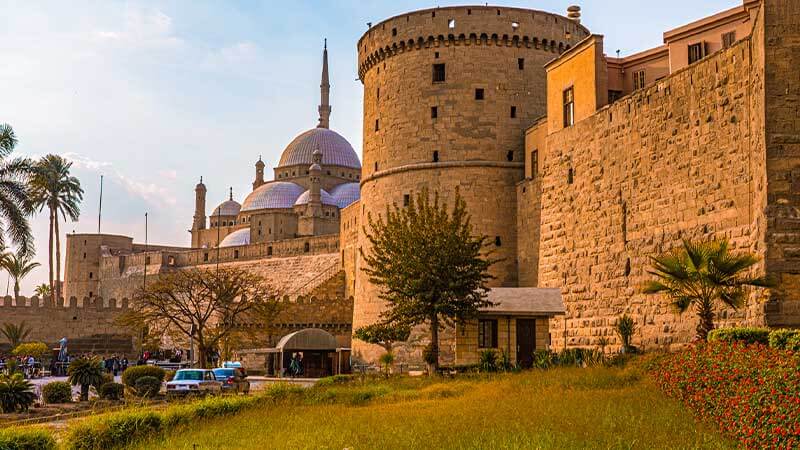
Despite being a historical monument, the Mosque of Muhammad Ali plays an essential role in contemporary Egypt. The mosque serves as a vibrant religious and cultural hub, hosting various events, lectures, and educational activities that promote interfaith harmony and cultural understanding.
The Mosque’s Influence on Art and Culture
The Mosque of Muhammad Ali’s stunning architecture has inspired artists, writers, and filmmakers for generations. Its depiction in literature, paintings, and movies has contributed to preserving its cultural legacy and global recognition.
The Mosque’s Enduring Cultural Impact
The Mosque of Muhammad Ali symbolizes religious devotion and is 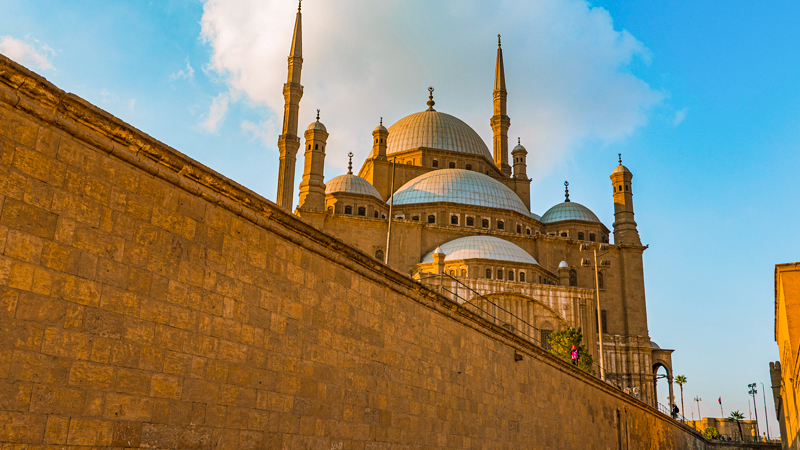 an emblem of Egypt’s rich cultural heritage. It serves as a reminder of the country’s glorious past and a testament to its continued commitment to preserving and promoting its cultural identity.
an emblem of Egypt’s rich cultural heritage. It serves as a reminder of the country’s glorious past and a testament to its continued commitment to preserving and promoting its cultural identity.
Preserving a Historical Treasure
In collaboration with international organizations, the Egyptian government diligently preserves the mosque, ensuring its architectural splendor remains intact for future generations to admire and appreciate.
Conclusion
In conclusion, the Mosque of Muhammad Ali is more than just an architectural marvel; it is a beacon of spirituality, cultural richness, and historical significance. Standing tall as a symbol of religious tolerance and unity, this magnificent mosque welcomes visitors from all walks of life to experience its splendor and spirituality. As we explore the Mosque of Muhammad Ali, we not only delve into the past but also celebrate the enduring legacy that continues to shape the present and inspire the future.


